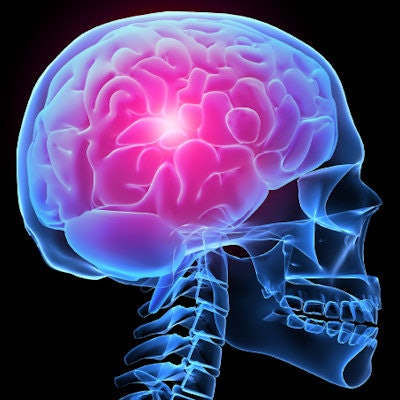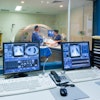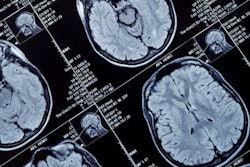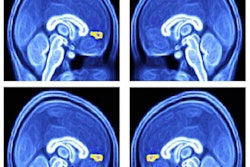
Researchers using diffusion-tensor MRI (DTI-MRI) may have discovered an underlying cause of abnormal brain development among preschool-age children with autism spectrum disorder (ASD), according to a study published online March 26 in Radiology.
The group from China identified altered white-matter tracts, which connect networks in the brain. The most significant abnormalities were in the basal ganglia and paralimbic-limbic networks, both of which are associated with regulating behavior. The hope is that the findings could eventually lead to better early treatment for children with ASD.
"Abnormal nodes in the basal ganglia network have been used to explain the repetitive and stereotyped behaviors in children with ASD," wrote lead author Dr. Shi-Jun Li and colleagues from Chinese PLA General Hospital and Beijing Children's Hospital. "These findings extend our understanding of the neurophysiologic mechanisms involved in ASD from a network perspective."
ASD characteristics
Autism spectrum disorder is a developmental condition that affects communication skills, causes repetitive behavior, and limits a child's interests or activities. Fortunately, ASD is often diagnosed within the first few years of a child's life, prompting early intervention and treatment to improve symptoms and functioning.
While a definitive cause for ASD is still unknown, previous DTI studies of the brain's white-matter integrity have illustrated atypical connectivity patterns among children and adolescents with the condition. More recently, DTI-MRI has been used to evaluate brain network connectivity among older patients with Alzheimer disease, multiple sclerosis, and epilepsy.
"On the basis of these recent findings, we hypothesized that abnormalities in preschool children with ASD are mainly associated with white-matter hyperconnectivity, specifically in networks involving the basal ganglia and the paralimbic-limbic system," Li and colleagues wrote. "[Alterations] in these networks are closely related to repetitive and stereotyped behaviors, as well as learning and memory impairment."
To study the phenomenon further, the researchers enrolled 21 children with ASD (mean age, 4.56 ± 0.97 years) and 21 children with typical brain development (5.13 ± 0.82 years) to serve as control subjects. The latter group had no history of neurologic or psychiatric problems (Radiology, March 26, 2018).
They recorded basic clinical data for all participants, including IQ, birth history, developmental delays, medication history, and their dominant hand. An autism-spectrum quotient was determined based on the Diagnostic and Statistical Manual of Mental Disorders, Autism Behavior Checklist, and Childhood Autism Rating Scale.
All participants underwent DTI and T2-weighted MR imaging on a 3-tesla scanner (Discovery MR750, GE Healthcare). The researchers then applied graph theory, which creates mathematical structures to model relationships between entities, to the results to determine the level of connectivity, or nodal efficiency, between brain networks.
Nodal efficiencies
When the researchers compared the ASD children with the controls, they found significant increases in subcortical nodal efficiency in the caudate, pallidum, amygdala, and putamen, which are part of the basal ganglia network. The greater nodal efficiency of the autistic children is an indication that their brains are slower to mature than those of healthy children.
| Efficiency of brain nodes in autistic children on DTI-MRI | |||
| Region | Autism spectrum disorder group | Typical brain development group | p-value* |
| Right pallidum | 0.034 | 0.030 | 0.008 |
| Left pallidum | 0.037 | 0.032 | 0.001 |
| Right putamen | 0.061 | 0.055 | 0.029 |
| Left putamen | 0.062 | 0.056 | 0.022 |
| Right caudate | 0.037 | 0.032 | 0.001 |
| Left caudate | 0.037 | 0.035 | 0.044 |
| Right amygdala | 0.033 | 0.028 | 0.034 |
"We found a striking predominance of increased nodal efficiency in childhood ASD compared with [typical development], which is in agreement with previous studies in adults," Li and colleagues wrote. "This brain hyperconnectivity in childhood ASD has been interpreted [in a previous study] as a reflection of the delayed or stunted maturation processes."
The researchers also found 13 nodes and 12 connections in the left hemisphere in both groups that exhibited significant differences (p = 0.036) in nodal efficiencies. The nodal regions involved were located in the paralimbic-limbic network, further confirming a connection with ASD symptoms.
| Differences in paralimbic-limbic nodal efficiency | |||
| Region | Autism spectrum disorder group | Typical brain development group | p-value* |
| Right parahippocampal gyrus | 0.052 | 0.047 | 0.005 |
| Left parahippocampal gyrus | 0.046 | 0.042 | 0.018 |
| Right hippocampus | 0.049 | 0.043 | 0.012 |
| Left hippocampus | 0.038 | 0.034 | 0.012 |
| Temporal pole of superior temporal gyrus | 0.043 | 0.039 | 0.018 |
Another key finding was a significant decrease in the nodal efficiency in the right supplementary motor area of children with ASD (0.073), compared with the typical development group (0.081) (p = 0.049). The difference in this comparison is indicative of an autistic child's motor dysfunction.
The researchers hope the findings point toward potential imaging biomarkers for preschool-age patients with ASD.
"Altered brain connectivity may be a key pathophysiological feature of ASD," added study co-author Dr. Lin Ma from Chinese PLA General Hospital in a prepared statement. "This altered connectivity is visualized in our findings, thus providing a further step in understanding ASD."


.fFmgij6Hin.png?auto=compress%2Cformat&fit=crop&h=100&q=70&w=100)





.fFmgij6Hin.png?auto=compress%2Cformat&fit=crop&h=167&q=70&w=250)











